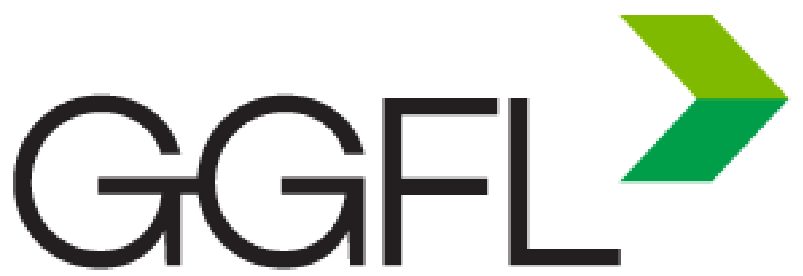From Startup to Scale: Lessons from a Billion-Dollar Entrepreneur
June 02, 2025
The 2025 edition of the Ottawa Business Journal’s Fastest Growing Companies event was more than a celebration of high-growth businesses. It was a masterclass in entrepreneurship. Hosted in partnership with GGFL Chartered Professional Accountants, the afternoon began with a dynamic workshop featuring Adam Miron, co-founder of HEXO Corp, in conversation with GGFL’s Chad Saikaley and OBJ publisher Michael Curran.
From a bike-tuning business in his childhood driveway to co-founding a billion-dollar publicly traded company, Adam offered a candid and detailed roadmap for entrepreneurs navigating the early stages of growth, fundraising, governance, and the rollercoaster of hypergrowth. Here are the most compelling insights from the discussion.
Entrepreneurship Starts Early: Find Opportunity in the Everyday
Adam’s entrepreneurial journey began at the age of 10, when his father encouraged him to start charging neighbors for bike tune-ups. “I made 100 bucks that first day,” Adam recalled. “It was more money than I’d ever seen, and I was hooked.”
That early lesson—look for unmet needs, test the market, and don’t be afraid to take the first step—set the tone for Adam’s future ventures. His story highlights how resourcefulness and an action-oriented mindset can be more powerful than formal training alone.
When the Opportunity Comes, Move Fast and Boldly
HEXO began, quite literally, around a campfire. When a friend mentioned Health Canada was accepting license applications for medical marijuana producers, Adam and his co-founder Sebastian St-Louis quickly mobilized.
They raised $1.13 million entirely from family and friends. “I remember looking around at my New Year’s Eve party and realizing if this doesn’t work, there’s not a single couch I can crash on,” said Adam. That early capital turned into one of Canada’s first licensed cannabis producers, ultimately reaching a market cap over $1 billion.
Speed, Adam emphasized, was critical: “There were others with more money and more experience. What we had was urgency and the willingness to act.”
Pick the Right Partners—Then Share the Pie
A turning point came when Adam and Sebastian pivoted from waiting on their own license to acquiring a dormant but approved license from another applicant. In that deal, they gave the third party a one-third stake. Adam initially resisted. “I thought, are you out of your mind? Give up a third?” But in hindsight: “It was the best decision we ever made.”
His advice to entrepreneurs? Be generous with equity if it brings in the right partners: “If you’re chasing a $10 million company, maybe be cautious. But if you’re going for a billion, you’re going to need help.”
Equity structures, Adam noted, evolved over time. In the early days, they didn’t know the difference between a SAFE note, preferred shares, or convertible debt. “We were learning as we went. If the broker said ‘this is what the market wants,’ we went with it.”
Today, Adam advises startups on how to structure rounds more deliberately, reminding them that market conditions often dictate terms more than personal preferences.
Governance, Strategic Planning, and Advisory Boards Matter (But Only if Done Right)
Strategic planning isn’t sexy, but it’s essential, especially when scaling quickly. “You should have a plan from the start—not something rigid, but something you can measure against,” Adam said.
He and Chad emphasized the importance of investing in HR and proper governance early, even if it feels like an overhead burden. “Too many startups want to raise money but haven’t updated their minute book, held an AGM, or documented their share options. Nine out of ten aren’t compliant with the CBCA,” Adam warned.
As for advisory boards, Adam is a fan—with a caveat. “Most suck. They waste founders’ time,” he said. The key is structure: “You need a real chair, someone running the board so the CEO isn’t spending all their time giving updates. If done right, they can be a game-changer.”
Keep Learning, Keep Growing
Reflecting on the chaos of scaling HEXO, Adam shared: “We were hiring 90 people every two weeks. At our peak, we had 1,600 staff. Sometimes, we were just hanging on for dear life.”
What would he do differently? “There isn’t enough time to list it all. But that’s the point. If you’re not learning and evolving every quarter, you’re not growing. We used to say: if we’re not embarrassed by our pitch deck from a year ago, we’ve stopped pushing ourselves.”
Advisors Aren’t Optional: Get the Right Help Early
In closing, Chad reinforced the importance of surrounding yourself with the right professionals. “Talk to people you trust. Ask who they rely on. The cost of bad advice, or no advice, can be massive.”
He left the audience with a reminder for founders to spend time working on the business, not just in it: “If you’re the CEO and still too tied to operations, that can hurt your valuation down the road.”
Conclusion
The workshop offered a rare behind-the-scenes look at what it really takes to grow—and survive—a fast-growth company. From bold decisions and sleepless nights to equity dilution and boardroom strategy, Adam’s journey is a testament to the grit, humility, and adaptability required to scale.






